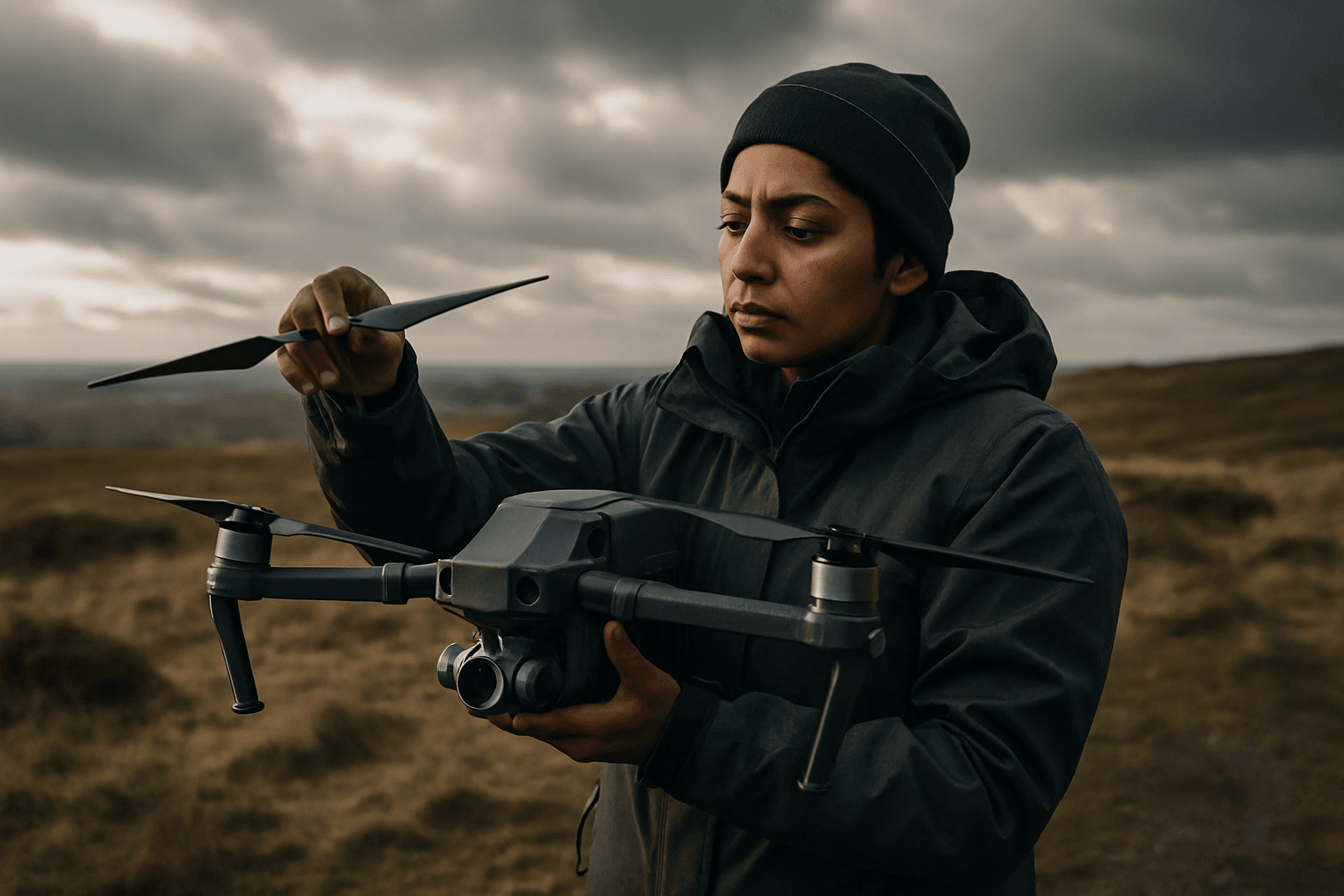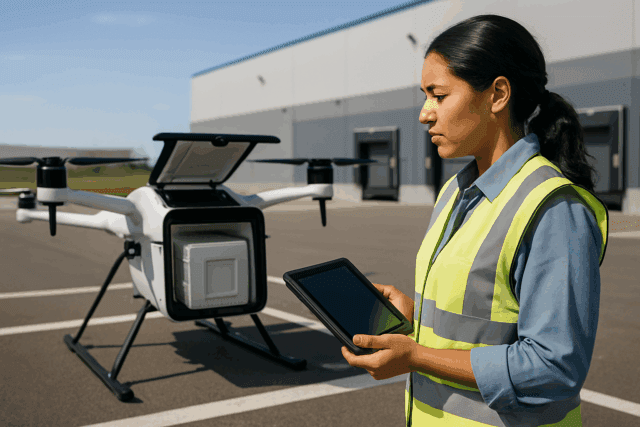In the critical realm of Search and Rescue (SAR) operations, every second counts. Unmanned Aerial Systems (UAS), commonly known as drones, have become indispensable tools, offering rapid aerial support and crucial intelligence in diverse environments. However, the effectiveness and safety of these high-tech assets are heavily influenced by environmental factors, with high winds posing a significant challenge. Mastering drone deployment in windy conditions is paramount for SAR teams to maintain operational efficacy and ensure the safety of both equipment and personnel.
Strong or unpredictable winds directly impact a drone’s stability, control, and endurance, increasing the risk of crashes or unintended landings. Therefore, understanding and implementing best practices for operating drones in high-wind environments is not just a recommendation but a necessity for successful SAR missions.
Understanding Drone Wind Resistance and Limitations
Before any deployment, it’s crucial to understand the inherent wind resistance of the specific drone model. Manufacturers provide wind resistance ratings, often expressed in meters per second (m/s) or miles per hour (mph), sometimes correlating to the Beaufort Wind Scale.
- Consumer vs. Professional Drones: Most consumer drones can safely fly in winds up to 10-20 mph, while professional and industrial-grade SAR drones are designed to handle higher gusts, typically ranging from 12-17.1 m/s (approximately 25-35 mph). Pushing a drone beyond its rated limit significantly increases the risk of loss of control, crashes, and potential damage to internal components.
- Battery Life Impact: High winds force drone motors to work harder to maintain position and trajectory, leading to a drastic reduction in battery life. Flight times can be cut by 30-50%, necessitating shorter missions and closer monitoring of power levels.
- Turbulence and Control: Gusts and turbulence, especially around structures or varied terrain, can introduce complications, making precise maneuvers difficult and potentially leading to uncommanded movements.
Pre-Flight Planning: The Cornerstone of Safe Windy-Weather Operations
Thorough pre-flight planning is the most critical step in mitigating risks associated with high-wind drone operations for SAR.
Comprehensive Weather Assessment
- Multi-Source Wind Data: Rely on multiple reliable weather sources, such as UAV Forecast, NOAA, and local meteorological websites. Crucially, check wind speeds at different altitudes, as ground-level wind can be significantly different (and often lower) than at operational altitudes. Pay particular attention to gust speeds, as sudden gusts are often the cause of crashes.
- Visual Confirmation: Supplement forecast data with a visual check of current conditions by observing flags, trees, and smoke to confirm that the forecast aligns with reality.
- Temperature Considerations: Be aware that cold temperatures can further reduce battery capacity and affect the drone’s wind resistance capabilities. Keep drone batteries warm prior to flight.
Strategic Flight Path Planning
- Fly Against the Wind First: A fundamental best practice is to plan your outbound flight path into the wind. This conserves battery power for the return journey, where a tailwind can assist the drone back to the landing zone when battery levels are lower.
- Identify Emergency Landing Zones: Always identify primary and secondary emergency landing sites that are clear of people, obstacles, and potential wind-related turbulence.
- Avoid Obstacles: Plan flight paths to avoid areas with natural wind blocks like tall buildings, trees, or mountainous terrain, as these can create unpredictable turbulent air currents.
- Altitude Management: Consider maintaining lower altitudes to reduce exposure to stronger gusts, making it easier to maintain control. However, for SAR, higher altitudes might be necessary for broader area coverage and maintaining visual line of sight. This balance needs careful consideration.
Detailed Pre-Flight Checklist
- Drone Inspection: Conduct a thorough visual inspection of the drone for any damage, wear on propellers, loose components, or cracks. Ensure motors spin smoothly.
- Battery Check: Confirm all drone and remote controller batteries are fully charged and in good condition (e.g., no “puffed” appearance). Bring spare batteries, especially for longer missions in windy conditions.
- Calibration: Calibrate the drone’s compass and GPS systems, as high winds can interfere with navigation. Calibrate the IMU and gimbal if needed.
- Firmware and Apps: Ensure all drone firmware, control apps, and remote controller software are up to date.
- SD Card: Verify the SD card has adequate space and is formatted before the first flight of the day.
- Safety Kit: Include an anemometer for real-time wind checks, along with personal protective equipment (PPE) like hi-viz vests and safety cones to mark the flight zone.
Equipment Considerations for High-Wind SAR Operations
Selecting the right drone for windy SAR conditions is paramount.
- Rugged and Weatherproof Design: SAR drones should be built to withstand harsh environmental conditions, including rain, snow, and high winds. Look for models with IP (Ingress Protection) ratings (e.g., IP54 or IP55) for dust and water resistance.
- Powerful Motors and Advanced Stabilization: Drones equipped with stronger motors, more responsive control systems, and advanced stabilization features are better suited to counteract wind forces and maintain stability.
- Payloads for All Conditions:
- Thermal Imaging Cameras: Essential for detecting heat signatures from missing persons, even in low visibility due to fog, smoke, darkness, or dense foliage.
- High-Resolution Zoom Cameras: Allow operators to capture necessary imagery from a safe standoff distance, reducing the need for close-proximity flight in turbulent areas.
- Laser Rangefinders: Provide accurate GPS coordinates of subjects, crucial for guiding ground teams.
- Communication Systems: Real-time video transmission with low latency is vital for situational awareness and rapid decision-making. Some drones can also carry megaphones or communication devices to assist victims.
- Extended Flight Time: While wind reduces endurance, drones with inherently longer flight times (e.g., JOUAV drones offering up to 480 minutes) provide a larger buffer for operations in challenging conditions.
Operational Techniques During Flight
Even with careful planning and the right equipment, in-flight adjustments and vigilance are crucial.
- Continuous Wind Monitoring: Continuously check real-time wind speeds and directions during the flight. Be prepared to adjust flight patterns or abort the mission if conditions worsen.
- Controlled Movements: Use smooth, deliberate control inputs. Avoid sudden jerks or rapid changes in direction, as these can destabilize the drone in gusty conditions.
- Maintain Visual Line of Sight (VLOS): Especially in windy conditions, maintaining VLOS allows the pilot to react promptly to any unexpected drone behavior or sudden gusts.
- Set Early Return-to-Home (RTH) Triggers: Adjust the RTH battery percentage to be higher than usual (e.g., 35-40%) to ensure the drone has sufficient power to return safely against potential headwinds. Do not wait for low battery RTH to trigger in high winds.
- Increase Standoff Distances: When flying near structures, increase standoff distances. Turbulent air currents around buildings can push or pull the drone into harm’s way.
- Leverage Automated Features: Utilize the drone’s advanced GPS and stabilization systems, and automated flight paths, which can help maintain a steady position in challenging conditions.
Safety and Risk Mitigation
Safety should always be the top priority in SAR operations, particularly when facing high winds.
- Know Your Limits (and the Drone’s): Understand your personal skill level and your drone’s operational limits. Never attempt flights that exceed either.
- Visual Observer (VO): Deploying a trained visual observer can significantly enhance safety by providing an extra pair of eyes on the drone and its surroundings, especially in dynamic weather.
- Collaboration: Integrate weather data into mission planning software and collaborate with meteorological services for accurate and timely forecasts.
- Decision to Abort: Establishing a robust framework for risk assessment is essential. In extreme cases, if conditions become too hazardous, delaying or canceling operations until conditions improve is the safest decision. It’s better to abort a mission than to lose a drone or, worse, endanger personnel.
By meticulously adhering to these best practices, SAR teams can harness the transformative power of drone technology, even in challenging high-wind conditions, to enhance situational awareness, expedite searches, and ultimately save lives.





